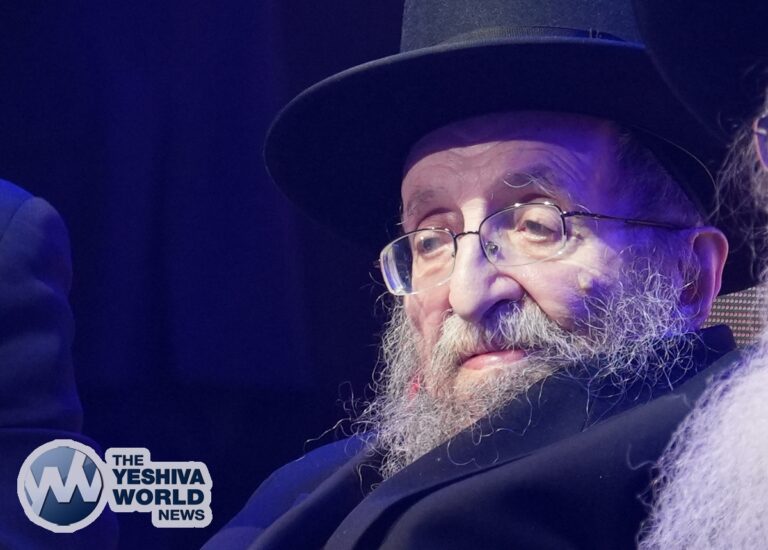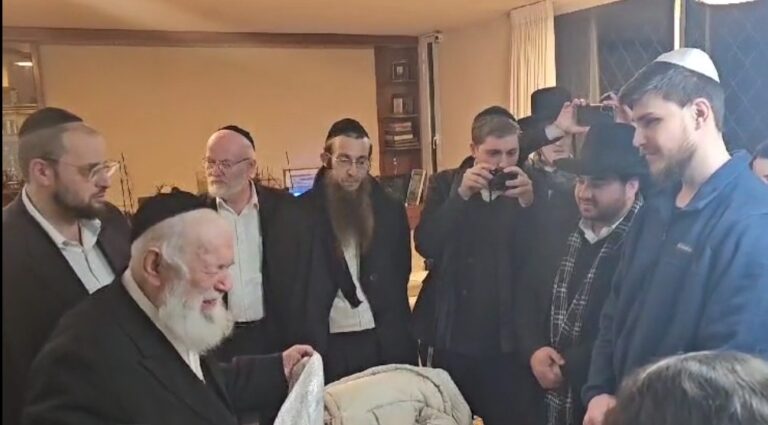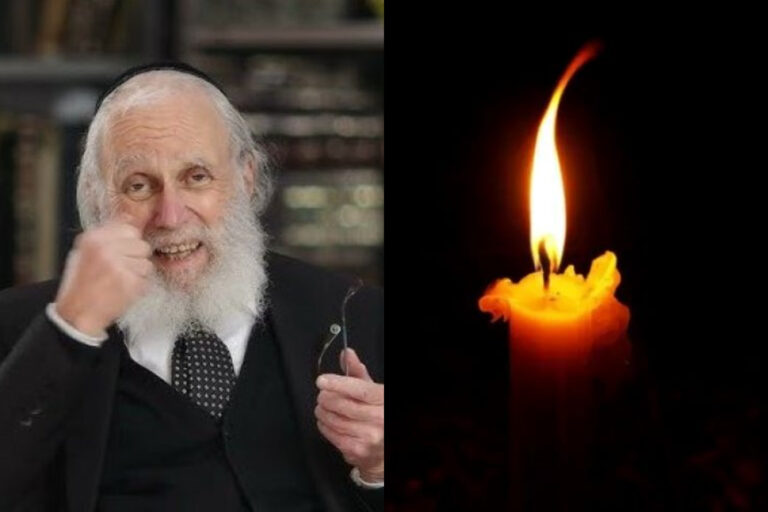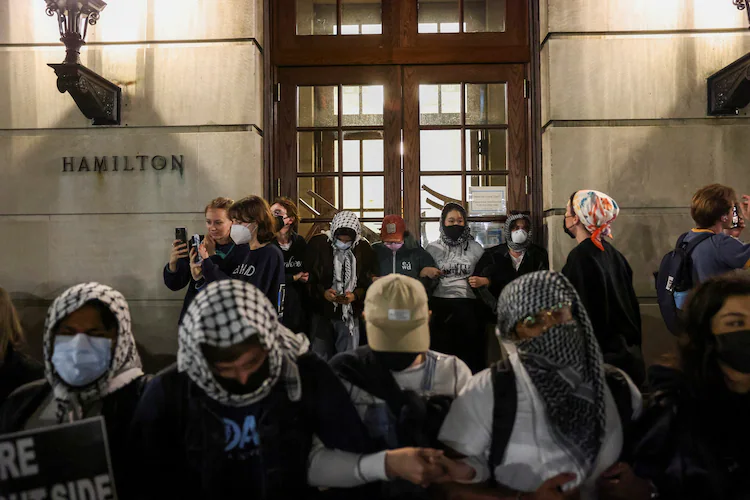
[By Rabbi Yair Hoffman for the Five Towns Jewish Times]
One family dressed up as Tzedakah boxes. Another person dressed up as a Shabbos table. One Brooklyn family is dressing up as a team of basketball players. The person in the picture is dressed up like an animal, and davening in shul.
Regardless of the costume, dressing up is definitely NOT one of our run-of-the-mill Minhagim.
Generally, our Minhagim deal with simanim – signs that indicate good mazel rather than bad fortune.They deal with eating or not eating specific foods- Example: Shavuos we eat milchigs, Chanukah – latkes, Rosh HaShana – honey.We don’t eat nuts or chrein during Yomim Noraim. Our other Minhagim deal with special Tefilos at special places:Kaparos with chicken or money, Tashlich by the water.
But dressing up?Where and when did this come from?
FIRST MENTION
The first mention of the notion of Jews dressing up in costume seems to be in the responsa of one of our Poskim from Italy, Rav Yehudah Mintz (Responsa #17). Rav Mintz lived in the late 1400’s and was niftar in Venice in 1508.The Teshuvah says that there is no prohibition involved in dressing up on Purim even in dressing like a woman – since the reason is for Simchah and not for the purpose of immorality – to violate Torah law.The Ramah quotes the Psak in Shulchan Aruch Orech Chaim (696:8).
STEINSCHNEIDER’S DILEMNA
Moritz Steinschneider, (1816-1907) the great bibliographer whose impact and opinions are still felt today, brilliant though he was, cannot fathom that the minhag developed independently.He attributes the development of the Minhag to the direct influence of the Roman Carnival. Carnival is a festive season which occurs immediately before the Catholic season of Lent. The Roman Carnival involved a public celebration and or parade that combined elements of a circus, the wearing of masks and public street partying. People would dress up in masquerade during these celebrations.Carnival is a festival traditionally held in Roman Catholic and, to a lesser extent, Eastern Orthodox societies. It originated in Italy and was held in February.
But our Minhag did not come from Roman Carnival.It is not that we believe that cultural diffusion does not exist. We do.
But its application must be tempered with rational precision and reason.We must always display a cautious intellectual approach.Scholars who know what Klal Yisroel is actually all about, know that this particular type of cultural diffusion is about as likely as eggnog consumption and Chrismas Caroling affecting the behavior of Yeshiva boys on a Purim.
CANNOT HAVE COME FROM THE ROMAN CARNIVAL
It simply would not have happened. End of story. The apperception of the Roman Carnival in Torah circles was beyond the pale of acceptable activity even to mimic.This cannot be the source – especially so close to the time of Rav Yehudah Mintz, who sanctioned its use.
No, we must look for other sources in order to find truth. Steinschneider’s theory is just too pat.We must also bear in mind that silence in the Seforim and responsa literature does not necessarily indicate absence in normative Jewish practice.A Minhag could exist and yet not be mentioned in the Seforim or Teshuvos until much later.
The Apter Rebbe, Rav Avrohom Yehoshua Heschel, was known as the Ohaiv Yisroel.He writes (Ohaiv Yisroel Shmos Section on Parshas Zachor) that one of the reasons why we dress up in masquerade on Purim is to show that the miracle of Purim came from something that actually would have initially caused us much grief.This, says the Apter Rebbe, stresses that the greatest joy lies in the knowledge that the opposite result might very well have happened.A good theory, but one that, perhaps, may sound more likely to be a post-development rationalization than the original cause of the Minhag.
Rav Yitzchak Weiss zatzal, author of the Siach Yitzchak and student of the Shaivet Sofer, explains (Siman 380) that the origin of the custom to dress up in masks is to highlight the fact that Haman hid his hate for the Jewish people when approaching Achashveirosh for permission to destroy Klal Yisroel.Hashem responded, midah Keneged midah – measure for measure – by sending Eliyahu – disguised as Charvonah.Eliyahu too was hiding his real intent – to defend the Jewish people.Here, the idea of hiding, and a mask as a central theme of Purim seems likely.It may very well have been the idea that spurred on the Minhagin Klal Yisroel to wear masks.
The Bnei Yissaschar (on Adar 9:1) cites a Maharam Chagiz who quotes the Gemorah in Megilah (12a).The Gemorah explains that the Jewish people only did things “Lifnim” – hidden – So Hashem as well only did things “Lifnim” – hidden.
The theme of hiding and its association with Purim, therefore, is found explicitly in the Gemorah itself. Could it have developed just then? Perhaps, but it is hard to imagine that it developed back then and no mention of this custom was made from 500 CE until the late 1400’s.
The mystery continues.
THE TOSFOS COMMENT
However, there is a Tosfos in tractate Rosh haShana (3a) that might be very enlightening here. The Tosfos deal with a fascinating episode in Parshas Chukas in the book of BaMidbar (21:1).The Cnaani in the Negev (the south) hear that Klal Yisroel has arrived and go out to do battle with them.Rashi identifies the incongruity.The Negev??Why, that is Amalek!
Rashi’s conclusion is that it was Amalekites who spoke in the Cnaani dialect so that Klal Yisroel will pray to Hashem that the Cnaanim be handed over to them and not the Amalekites!
Our Tosfos, however, add more.They write that the Amalekites changed not only their voices and dialect, they changed their clothing too.They cite the person who wrote the piut for Parshas Zachor – Ksus VeLashon Shineh – Clothing and language he (or they) did change!
So here is the theory, then.
It is France and Germany, not Italy.The Paytan for Parshas Zachor has written that they changed their clothing – referring to the Amalekites. Jews see it. Parshas Zachor is close to Purim. Very close.Some regular people read the piut. They may think, perhaps, that it refers to Jews..The scholars among them realize that it refers to Amalekites, but Haman is from Amalek anyway.
On Purim we are Marbeh BeSimcha. It is in the Piut. They begin to dress up, like Haman.
The Minhag catches on.The Talmidei Chachomim of Germany accept it.
THE PRACTICE TRAVELS TO ITALY
Soon the practice travels to Italy. Steinschneider cannot resist and attributes it to the Roman Carnival. But he errs. It is much likelier that it came from the Piut for Parshas Zachor.The origin is a kasher minhag b’Yisroel from German-Jewry.
BACK TO THE APTER RAV
And now we go back to the Apter Rav – the Ohaiv Yisroel.He writes that one of the reasons why we dress up in masquerade on Purim is to show that the miracle of Purim came from something that actually would have initially caused us much grief.This, says the Apter Rebbe, stresses that the greatest joy lies in the knowledge that the opposite result might very well have happened.It is a Minhag that brings us ever closer to the true Dveikus Bashem and Simchah that lies at the heart of what Purim is all about.
DRUNK ON THE CONCEPT NOT ON WINE
Let us, with this in mind, remember the words of the Nesivus Shalom regarding drinking on Purim.He writes that the word “wine” is absent in the formulation of the Shulchan Aruch. “Chayav adam libsumei bePuraya ad delo yada.”
The reason is clear.We must become inebriated with the concept of Purim and not with wine.The concept of Purim is that Hashem is very close and that we can achieve remarkable Dveikus Bashem at this time.No matter how distant we are – even if we are “Arur Haman” in terms of our general distance from Hashem– we can become, at this particular time of Purim, as close as Boruch Mordechai.
The nation of Israel can achieve a remarkable degree of real genuine Dveikus Bashem. We can do so like no other people can.When we dress up, therefore, let us appreciate the significance and the Taamim brought down by the Apter Rav, the Bnei Yissaschar and the Siach Yitzchak.This Purim, let us discover the talent that lies within us in this area.If we can do this, we can achieve both a personal Geulah as well as one for all of Klal Yisroel Amain.
The author can be reached at [email protected]











4 Responses
Sorry, nice try, but not very convincing. You’re saying it started in France/Germany, yet it’s first mentioned in an Italian Tshuva?
More like you mentioned earlier, “cultural diffusion” and “post-development rationalization”.
See the shtisel challah article too
The reasons we dress up are Yadua!
First of all, al derech ad delo yada bain orur haman liboruch Mordechai, that we should not see eachother based on our levels, and even confuse [the Satan??] with not only covering, but masquerading, to not just cover our level, but to “replace” and/or “negate” it with a transformation. Especially as we were all subject to the decree as one without regard for level [or “class”], we unite in so doing, while keeping true to our diversity, to show no matter the color or flavor or “costume” reflected we were targeted, and not to think anyone should change.
Simcha poretz geder. Usually we have kamayim haponim el ponim, but on Purim we transcend this level with Simcha which not only penetrates past any masks or charaterizings even when we don’t see one another, but helps to keep us on the Simcha assignment, since it is the nature when seeing someone (also on Purim) who is on a different level to reflect and/or lean towards concern/empathy we skip it all not distracted at all and just roll with our Simcha which is poretz geder, and the right approach anyway, not only on Purim but a lesson also for the rest of the year, Simcha (during the year, maybe with the right “walk-in” is the “cure”.
Certainly the one day of year where Simcha is a/the focal point, that so one who is still working their way into it, not be embarrassed by being seen where he’s holding on Simcha day. And costumes being a keli and a teaching, for Simcha especially which is a paramount foundation in Avodas Hashem, that mitoch shelo lishma ba lishma, which is hinted by the costume which is not the real person, shelo lishma, ba lishma, the actual kavana of Simcha and by extension in their Avodas Hashem they can rise above throughout the year, not only by changing hanhagos on any level, but with Simcha poretz geder. And costumes as a sign that people are going not as who they really are, so any feeling the person feels that is not Simcha is not their true self either, but a costume they can change right away to reach their true etzem which is Simcha in Avodas Hashem etc, their real ratzon penimi.
For achdua to teach us that on Purim when seeing people in costume we know what we see is not the real person, so too all year, when we think we see another person it is only levels of chitzoniyus, and the pnimiyis is hidden, and therefore we should not be fooled, but rather connect on the fundamental level os one Yiddishe Neshama to another. And also to breach the divide of our different Kehilos and levushim and Nuschaos, and show that we are all “Am Echad” in one Torah. To go higher than even “machlokes leshaim Shomayim”, to “ke’ish Echad belaiv Echad”. As Purim is when we were mekabel the Torah miSinai, not through higher than teva, but within teva with a worldly level of bechira (as brought down by our Chachamim..), Torah leMoshe miSinai, all in agreement. And in teva, that we not only dress like different Livushei Derachim baTorah, but Torah is for the whole world, and our bechira was in teva, so we dress from different levels of teva, not just like us. And costumes are creative and outside of the normal and regular, and mostly outwardly al derech “funny”, even just going of the norm is a supercharge of the Simcha, especially when inspired al pi teva by the creativity of them and by the clever touches and ways they are crafted, causing Simcha, and so too obviously when they are portraying funniness, which is part and parcel with the inyan hayom of Simcha.
And when giving Shalach Manos we cover up, and with Simcha, so when we give Shalach Manos we show to all that it is an emise giving, and not like lehavsil an akum that gives to receive. That we don’t show ourselves, and we convey Simcha in our, not cover hiding, but costume, if not outright al derech funny, then fake, so it is shown that on every level we are Giving, and not only not to receive, al derech they don’t see who is giving, but we give them a spruce up bipenimiyus too through our dress, and not chas veShalom that someone might think we give mixed signals or other “indications” when We Give. Lehavdil by an akum.. we see they want even without giving and hide their identity, and in the way that they do, and if one doesn’t give there are faced with repercussions as they say outright, so that why they hide who they are.
And for those who have the Minhag of wearing a costume by the Seuda, it is a keli to be, not in the tur of a host and a guest with all the manners cordia
cordialisms, or a family with all the levels of yoshvim etc, we rise above this for Simchas haYom (as can be learnt from Rabba and Reb Zaira, where Rabba is portrayed as acting in the opposite level of his Great Kavod and ofen of Madrich, and the Techiya of Reb Zaira showed also that we have siyata dishmaya protecting us..) so all at the Seuda too can be outside of their darga, and have opitome of Simchas haYom the ikar, and not the usual teva of another Seuda, with our Hatzalas hayom coming from Tzom uVichi uMisped, Yiras Hashem, now we celebrate with the higher Ahavas Hashem, this bringing Ahava by extension to all present without limitations, and even surpassing Yira for all. That through Simcha, the highest level of Avodas Hashem, we reach the higher Ahavas Hashem, bringing a higher Achdus! And of course mitzad the inyonim of Yira being specific “Lo Saase’s” it doesn’t shtim the inyan of al Detech relaxed “Kavod” formalities to reach Simcha and Ahavas Hashem and higher Achdus in the Seuda the opposite of Tzom vechulu. And herein lies also the facilitating of “lebesumei bePurya ad delo yada vechulu”, along the same lines of a boundless Seuda. And we show openly through this the inherent Emunah that is found [if by some only al derech tarnished outside of its essence] by all Yidden, that there is never a chv”Sh ad delo yada chulu, in relation to HKB”H. But that a Yid is always connected and through the besumei, “nichnas yayin yatza sod”, the Ratzon Penimi of a Yid is revealed [like taught by gittin is for the Ultimate Good] revealing the Inherent Emunah in and Ahava of Hashem, where there is no pirud by Him of orur/Baruch, being lemaala mai’zeman, where a person who is still chas veShalom beshaas risho, by Hashem he is no less biShaas Teshuvaso, where the person reaches where even “ain Tzaddikim Gemurim yecholim laamod” for example, or even Nehenin MiZiv HaShechina BaOlam Haba (as he can be a Tzaddik through Teshuva). So if “ad delo yada” to the point of that person ym”sh, who sought to bring an end chas veShalom to all Yidden, kal vachomer we will draw down in the world the elevation of every persom, and the Tzidkus and Teshuva of every Yid, through this avoda, bateva, of connecting on such high a level with HKB”H, that we can reach such a level of manifesting the Achdus lemaala mai’zeman of “ad delo yada” of a Yid with a teva of Emunah, to even draw it to everyone, as Chazal Teach even a goy can be raised, from not, to a level to be zoche to Olam Haba (and al derech the befairush inyan of “ad delo yada”, even that one who made the pur can, if only through gilgul[im], also reach this level). And of-course from HKB”H being “Rachamuv al Kol maasuv”, “ad delo yada” is higher than “venahafoch hu”, not that there’s a koach of hifuch chas veShalom, but specifically “ad DELO yada”, higher than even “venahafoch”, bringing about through Shomayim al derech or Emunah Ikris veChulu, here ba’olam a Shlaimus in the present “venahafoch hu asher Yishletu haYehudim Haima vechulu”, and even until the avoda of venahafoch has an inyan of venahafoch in it, where it’s not Yishletu haYehudim Haima.. vechulu, but rather venahafoch those other haima into Chassidei umos haolam. And so we wear a costume to signify a person who doesn’t wear their usual finest when working on the depths. That through what seems like a yerida, in several ways, is actually great Shmirah that also comes through an Aliyah (of being nichlal in our whole being what can be the highest level of the whole Yiddishe Shana, as even Y”K is KiPurim vechulu). And also for this reason we wear a costume, to show we are different now, and we wear something that is not serious, a fake costume, to show and embody that it is without gaava in relation to the Avoda of the rest of the year, which each has Hanhagos that relate to the ways those times have an advantage.
“Shloshim yom kodem haChag”, Zeman Chairusainu, (with Matza and marror serving for anivas hazeman), “kalevush tachalefaim veyachalofu”, we wear any other levush, a costume, to go beyond the inyan of our levushai im timtza lomar keva, until “veyachalofu” this affect we have becomes keva on Tes Vuv Nissan, being maier a hamshacha in our halvasha for Zeman Chairusainu. (Nireh that for our Ir Makif Choma mai’zeman kivush haAretz [thereby having an inherent al derech {by the day} “Techum” in makom and zeman] the peula is chal from haschalas oso hayom retroactively, making that the first day in the keva count, unlike otherwise where the count begins on the day following the peula, resulting in this hamshacha also being chal Tes Vuv Nissan.)
“Shakul Tzedaka keneged kol haMitzvos”… the most widely recognized reason is because of the particular Mitzvas Hayom of Matanos La’Evyonim, and especially so considering the recipients are not also Aniyim but Evyonim specifically (so they don’t have that affect where they shield eachother from a measure of the embarrassment [as usually, the Oni is shielded internally knowing as not being one of the Evyonim, and the Evyon is shielded by knowing he can carry himself as though he’s only one of the Aniyim), so we all wear costumes so the Evyonim can collect funds costumed/masked or between collecting seem costumed in what they have, and similarly “kol haposhet yad nosain lo”, one who is visibly not an Evyon can put their hand out to another in view of an Evyon depending before or after he does, and if possible also give it to him; and in these ways we protect the Evyonim from embarrassment, and thereby also infuse for them increased Simchas Hayom.
A bonus noteworthy mention, given the Avoda of Ahavas Hashem inherent to Purim is also the natural Avoda in Geulah, and the “ad delo yada” is also related in that during Geula goyim are still being elevated, and those who are and/or when they are wholesomely along with us and are al derech catching up learning about HKB”H so the adl”y kv”ch limud comforts and reinforces them, and “ein bein olam hazeh liYemos HaMashiach ela shibud Malchuyos bilvad” during Geulah Avodas HaTzedaka will still be practiced [and also even once we reach Olam Haba when, as we are Taught, those who have lost their share will still be able to experience Olam Haba by receiving intermediarily in a way of Tzedakah/Matanah]..
..so these add explanation for why Megillas Esther is the only Sefer of Na”CH that is not betailos in the time of Geulah.
There still remains to be expounded how in the time of the fully manifested Geulah when there is no hunger or war [Tzedakah still???] and no jealousy or corruption, and ALL the world will be occupied only to know Hashem, how our Purim costumes will fit in.
As may have been noticed by now, degress of the above expositions are Chiddushai Torah of mine, and are not widely recognized reasons for the custom of costumes.
May no one mistake that this custom was chv”Sh adopted from others, as our Torah explicitly forbids with multiple prohibitions chas veShalom the adoption of those foreign customs mentioned.
Also note that Minhagim are carried by our cherishing communities without nevessarily being written down, especially those years ago. And as we see the first mention of dressing up cited reflects an established custom, only making mention of it for a fairly pertinent Halachic notation (dressing in another gender’s style, which may have been a recent iteration then), and as permissively ruling on what would otherwise be an outright Torah prohibition, this reveals not only that this Minhag was already fully rooted, but seemingly also that there was an established precedent in regard to the Halachic matter, giving allowance for a definitive allowance to be declared, in consensus with the Rabbis of the generation, as arguably would be required in such a matter, as we are Instructed: “Torah lo baShomayim he”. It can also be that “it is only for joy not for…” in regard to the particular Halachic question, may be a gentle way of saying that since the Minhag has roots in protecting fellow Yidden from embarrassment (“that may inhibit their Simcha..”), that for this reason what would otherwise be forbidden is permitted, and even when the same thing can be done in a different manner, we are not particular (as is the case with other Halachos that, if this is the case, can be comparable). Should this be the case, it would highlight how integral of a Minhag this actually is, and why it may not be included in the Halachos of Purim; so that the reason(s) are not in the forefront of people’s minds in the lead up to, and on the day of Purim.
That said, may we appreciate the Good that has been Bestowed upon Us by our Torah, insofar also as giving us this Minhag, and just run with it on our future Purims, while maybe appreciating the Ruchniyusdike bisumai bePurya Torah it imparts, particularly especially the Ahavas Hashem VeChulu…!!!
A Frailichen Shushan Purim!!!